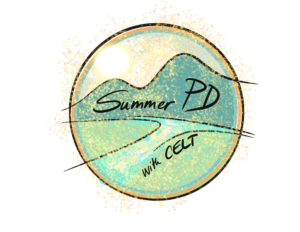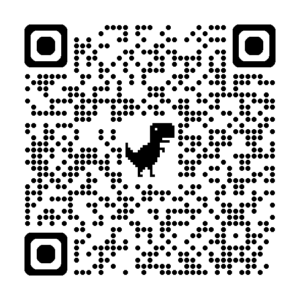
This third installment of our 2025 Summer Asynchronous Professional Development offers three activities highlighting practical uses of AI in creating teaching and learning resources for your courses.
Activity 1 – One Course Outline, Infinite AI Possibilities!
by Dr. Ajay Dhruv, Assistant Teaching Professor, Department of Computing Science
Imagine having an AI teaching assistant who knows your course outline and can help generate quiz questions, explain difficult concepts in easier ways, or summarize key ideas for students with diverse learning needs. In this activity, you’ll experiment with training an AI agent using your own course materials.
Generative AI tools (like ChatGPT, Google NotebookLM or Grok AI) can act like co-pilots in your teaching practice especially when they understand your course context. Feeding your course outline to an AI model can help it generate outputs that are aligned with your course goals, learning outcomes, and instructional style. This activity is designed to show you how you can use your existing content or course outline to customize AI-generated content.
Remember: You’re not just using AI. You’re training it with your expertise. Start small, experiment, and see how it evolves with you.
Steps:
1. Choose a Course Outline
Pick a course outline (.PDF, .DOCX, or even a copy-paste from Moodle) that you’re familiar with.
2. Use an AI Tool
Open ChatGPT or any other AI tool. Most of these tool’s work on a phone, sometimes have a Mobile App version, or desktop.
3. Feed the AI Your Course Context
Prompt example (paste into the AI tool):
“You are my AI teaching assistant. Here’s my course outline. I want you to remember the course outcomes, assessment methods, and weekly topics. Based on this, help me generate a bank of quiz questions for Week 2 (topic: Deep learning architectures).”
Avoid “Please” and “Thank You” in your prompts
(Then paste your course outline content)
4. Explore What It Can Do
Now try any of these prompts:
- “What would be a good analogy for the topic – backpropagation?”
- “Summarize Week 3 content for a student with ADHD.”
- “Give me 3 reflection questions for the ethics module.”
5. Reflect
What worked well? What surprised you? What might you try next time?
Want to Go Further? Here are some resources:
- Stanford eCorner. (2023, June 5). How Stanford teaches AI-powered creativity in just 13 minutes | Jeremy Utley [Video]. YouTube. https://www.youtube.com/watch?v=wv779vmyPVY
- AI for Educators. (2023, March 26). ChatGPT for teachers with prompts | Optimizing teachers’ work with ChatGPT | AI for educators | AI [Video]. YouTube. https://www.youtube.com/watch?v=DYQkn-3m2oU
Activity 2 – A Step-by-Step Guide to Tailoring Generative AI to Your Course
by Dr. Quan Nguyen, Assistant Professor, Department of Computing Science
Generative AI is everywhere in education now—your students are probably asking ChatGPT for help before they even try reading the assignment. And while these tools can offer students explanations or solutions in seconds, they’re not exactly tuned to your course, your assignments, or your teaching style. That’s why I decided to make my own Custom GPT—something that actually follows my rules, doesn’t hand out answers like candy, and maybe—just maybe—helps students learn instead of just survive.
Why Use a Custom GPT Instead of Generic ChatGPT?
A custom GPT is like having a teaching assistant trained specifically for your course. Unlike the generic ChatGPT:
- It follows your course syllabus, style, and policies.
- It provides consistent help aligned with your learning outcomes.
- It avoids giving away answers or hints too early.
- It can scaffold students through challenges instead of solving problems for them.
- It can incorporate your rubrics, examples, and even personality.
Ultimately, a custom GPT helps preserve how you want students to learn—not just what they learn.
Requirements and Cost
- Platform: You’ll need a ChatGPT Plus subscription ($20/month as of writing).
- Tool: OpenAI’s Custom GPT builder is integrated into ChatGPT at https://chat.openai.com/gpts.
- No coding required: You can use a conversational interface to define capabilities.
- Optional: You can upload files such as your syllabus, rubrics, lecture notes, or example questions.
Step-by-Step Tutorial: Tailoring a GPT for an Introductory Python Course
Let’s walk through how to create a GPT that supports students in “Introduction to Python Programming.”
Step 1: Define the Purpose and Boundaries
Ask yourself:
- What kind of support should the GPT offer? (e.g., explaining syntax, debugging code, reinforcing concepts)
- What should it not do? (e.g., solving assignments directly)
- What tone should it use? (e.g., encouraging, Socratic, direct)
Example instruction:
“You are a Python tutor for CS101. Always encourage students to think through problems. If a student asks for a solution, ask guiding questions first. Use simple language and explain code line by line.”
Step 2: Launch the Custom GPT Builder
- Go to chat.openai.com/gpts.
- Click Create a GPT.
- Use the wizard interface to:
-
- Name your GPT (e.g., CS101 Python Helper).
- Set the profile picture and greeting.
- Define capabilities like code execution, browsing, or image generation (turn these off for basic coding help).
- Add instructions like the ones above.
Step 3: Upload Course Materials
Under the Knowledge section, upload:
- Your course syllabus
- Assignment descriptions
- Sample code snippets
- Rubrics or grading criteria
- Any frequently asked questions
These will help the GPT contextualize student requests.
⚠️ Caution: Avoid uploading copyrighted textbook content, full solution sets, or sensitive internal materials. Anything you upload may influence the GPT’s responses and should be treated as semi-public.
Step 4: Add Custom Instructions
The most important aspect of building a Custom GPT is crafting the system instructions that shape its tone, behavior, and boundaries. These instructions act like your teaching assistant’s training manual.
Focus on Pedagogical Intent
Ask yourself: What kind of support should this GPT provide?
Examples:
- Explain concepts using course-relevant examples
- Ask guiding questions rather than giving direct answers
- Scaffold debugging without writing code for the student
- Reinforce academic integrity
Sample Instruction Template
You are a teaching assistant for the course "CS101: Intro to Python". Goals: - Help students understand Python concepts like variables, loops, conditionals, and functions. - Encourage reasoning and critical thinking rather than giving direct answers. - Use examples consistent with the course textbook and coding style. Rules: - Do not write full assignment solutions. - Do not provide hints unless the student shows an attempt or asks a clear conceptual question. - Use simple examples, and explain step by step.
Step 5: Test with Realistic Student Prompts
Try common student queries:
- “What’s the difference between a list and a tuple?”
- “My code isn’t working, here it is…”
- “Can you do my assignment for me?”
Observe how your GPT responds. Make sure:
- It’s accurate and clear.
- It refuses inappropriate requests politely.
- It guides the student to the right concept or resource.
Step 6: Share the custom GPT with your students
Once the custom GPT is created you can create a sharable link to be disseminated to your students. Here’s an example of the customGPT for the Python programming course I created: https://chatgpt.com/g/g-68880a9051748191af86008c73adf133-pyhelp
Reference materials:
https://mitsloanedtech.mit.edu/ai/tools/writing/custom-gpts-at-mit-sloan-a-comprehensive-guide/
https://hbsp.harvard.edu/inspiring-minds/create-custom-gpts-for-your-course
Activity 3 – Designing a Grading Rubric Using AI
by Bradley Forsyth, Coordinator, Educational Technologies
A rubric is an evaluative tool comprised of evaluation criteria, a scoring scale, and descriptions that distinguish student performance for a given criterion (Popham, 2000). Rubrics can help instructors provide targeted feedback, mark consistently and objectively, and reduce grading time. They can also help students understand assignment expectations, connect the assignment to course learning objectives, improve their performance by integrating feedback, and evaluate their own work (Chaaban, 2019). So, why don’t we use them more? Because they are time-consuming to create! Using a generative AI tool can help you with the efficient development of rubrics. I’ll outline the steps below.
Step 1: Define Your Needs
Before drafting your rubric with generative AI, ask yourself the following
- What knowledge and skills are the assignment designed to assess?
- What observable criteria represent those knowledge and skills?
- How can you divide those criteria to represent distinct and meaningful levels of performance? (3-5 levels is ideal)
- What differentiates strong work from weaker work?
Step 2: Craft Your Prompt
A well-crafted prompt will improve your AI-generated output. Watch the following video on how to create a pedagogically sound rubric to generate an effective prompt for your assignment:
- Creating Effective Rubrics (Centre of Teaching and Learning University of Alberta): https://youtu.be/z2VkENHqSGg
You can choose to provide the AI tool with the evaluation criteria and scoring scale and have it draft the performance descriptions only (often the most laborious part) or prompt it to suggest criteria as well.
Here is an example prompt that you can adapt:
You are an expert in teaching and assessment. Please help me create a well-crafted rubric that includes criteria, a scoring scale, and descriptions for each performance level. The rubric should assess the following task: [description of task]. The rubric should align with the following learning objectives: [list learning objectives]. Format the rubric as a table, with [#] criteria in the left column and point values of [#] along the top row. The descriptions should use clear and student-friendly language and represent meaningful progressive differences in performance.
Step 3: Review and Refine
AI-generated rubrics should only serve as a first draft. They will require careful review and iteration to ensure they meet your requirements.
As you are reviewing, ask yourself the following:
- Are the performance criteria and descriptions clear, accessible, and meaningful?
- Are the descriptions observable, measurable, and representative of meaningful progressive differences in performance?
- Does the rubric allow for multiple valid approaches to the assignment?
- Are the criteria and performance levels directly tied to your course’s learning objectives and assessment goals?
(UCLA; Chaaban, 2019)
Once you are happy with your rubric, you can integrate it directly into your assessment activities in Moodle. This can help make your marking criteria more transparent and makes grading a breeze! Contact us at moodlesupport@tru.ca if you have any questions.
Your turn! Try adapting the prompt template above to generate a rubric using a generative AI tool of your choice, such as Copilot. Experiment with refining your prompt as needed. Do you see any opportunities to improve the quality and efficiency of your rubrics?
References
Chaaban, M. (2019). Best practices for designing effective rubrics. Arizona State University. https://teachonline.asu.edu/2019/02/best-practices-for-designing-effective-rubrics
Popham, W. J. (2000). Modern educational measurement: Practical guidelines for educational leaders (3rd ed.). Boston: Allyn and Bacon.
UCLA. Using AI to Create Rubrics. Retrieved from https://humtech.ucla.edu/instructional-support/ai-toolkit-for-the-humanities-classroom/using-ai-to-create-rubrics/






